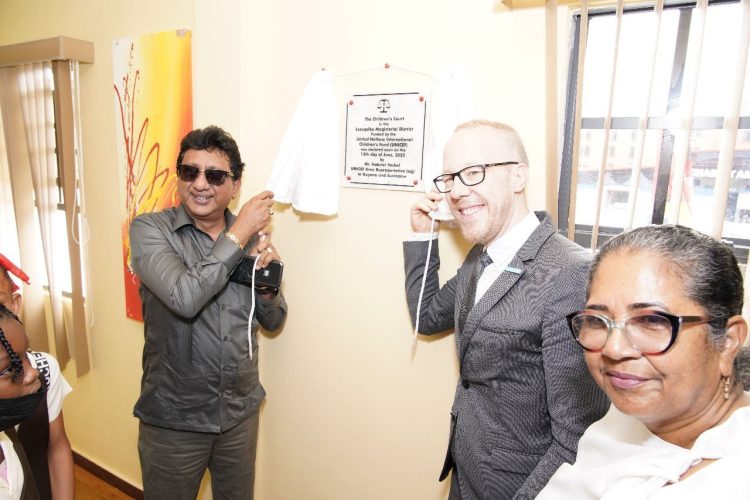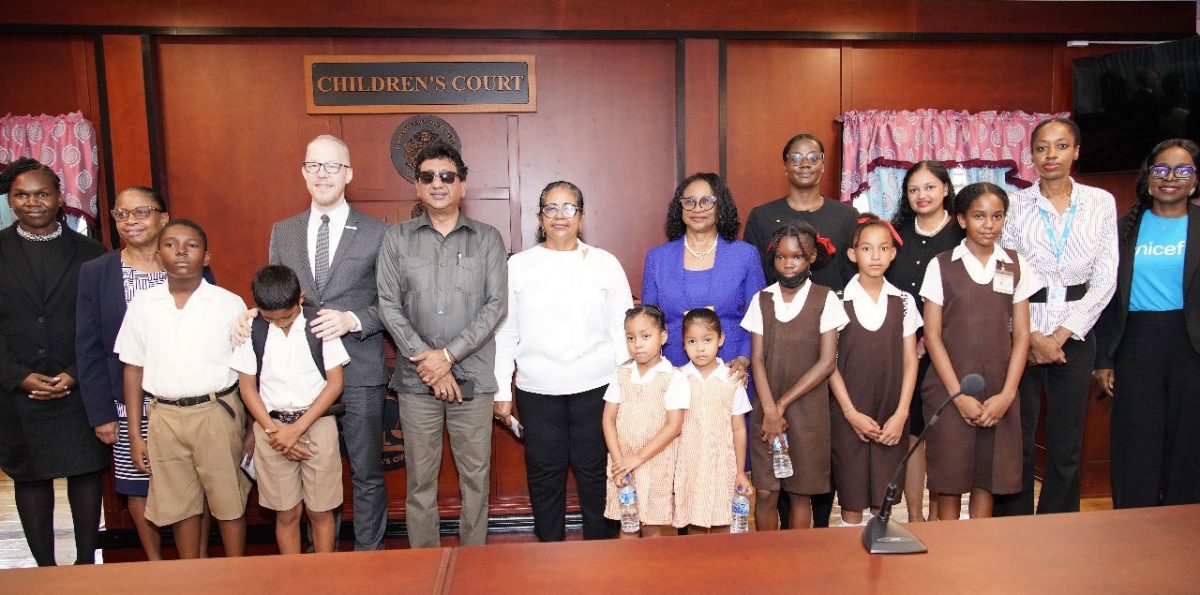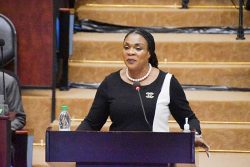A Children’s Court was officially commissioned yesterday morning at Charity, Region Two by the Ministry of Legal Affairs and the Judiciary of Guyana in collaboration with UNICEF.
The initiative, valued at $72 million, aims to provide restorative justice and rehabilitative services for children who come into contact with the legal system. The court was opened in the presence of Guyana’s Attorney General and Minister of Legal Affairs, Anil Nandlall SC, Chancellor of the Judiciary (Ag) Justice Yonette Cummings, Chief Justice (Ag) Roxane George-Wiltshire, UNICEF’s Acting Representative Gabriel Vockel, Region Two Chairperson Vilma De Silva and Justice of the Appeal Navindra Singh.
The project was done in different phases and involved the renovation of the Charity Magistrate’s Court, the construction of a modern annex, rewiring and electrical upgrades, the installation of new washroom facilities, and the erection of a security fence. These improvements are geared at ensuring a child-friendly, dignified, and functional space for both judicial officers and the young persons appearing before them.

Speaking to special invitees, residents and schoolchildren, Nandlall emphasized that it is the only such court in Region Two and it represents a critical step forward in how Guyana addresses juvenile justice.
He said that children are Guyana’s greatest asset and the Government is committed to nurturing and guiding as well as providing the necessary resources not just in education but also to provide a justice system that heals. He highlighted that the Government of Guyana has implemented several child-centric policies, including modern legislation on custody and adoption, and has signed on to international protocols related to child welfare and protection. He also cited support programmes like the “Because We Care” Cash Grant, which helps ease the financial burden on families.
The new court, Nandlall said, aligns with the Juvenile Justice Act of 2018, which introduced comprehensive guidelines on how children should be treated from the point of arrest through trial and sentencing. The Act, developed with input from the Guyana Police Force and other stakeholders, places strong emphasis on rehabilitation, reintegration, and restorative justice. He also acknowledged the vital collaboration between the Ministry of Legal Affairs and the Ministry of Human Services in providing custodial care and ensuring the well-being of minors within the justice system.
UNICEF’s Acting Representative Vockel called the court’s establishment a historic milestone that strengthens child protection in Guyana. Vockel said that the initiative supports Sustainable Development Goal 16, which promotes peaceful and inclusive societies, access to justice, and effective, accountable institutions.
Regional Chairperson Vilma De Silva described the court’s opening as a significant advancement for Region Two, home to more than 15,000 children. She said that she is happy that Essequibo has benefited from such a court and commended all stakeholders for making it possible. Justice Singh, an Essequibian native, delivered remarks on the court’s significance. “This isn’t just about legal reform—it’s about giving children a second chance. A chance to rewrite their story, take accountability, and find hope,” he said. He noted that many children who find themselves in conflict with the law do so because of poor choices—not because they are inherently bad.
Chief Justice (Ag) George-Wiltshire described the new facility as the third of its kind in Guyana, funded by the Government in partnership with UNICEF. She underscored the court’s alignment with Article 40 of the Juvenile Justice Act, which ensures that children are treated with dignity, respect, and are given every opportunity for reintegration into society. She added that the court features digitalized systems, modern amenities, and specialized spaces to serve the unique needs of children. Plans are underway to replicate the model in other regions. Such courts exist in regions 3 and four.








